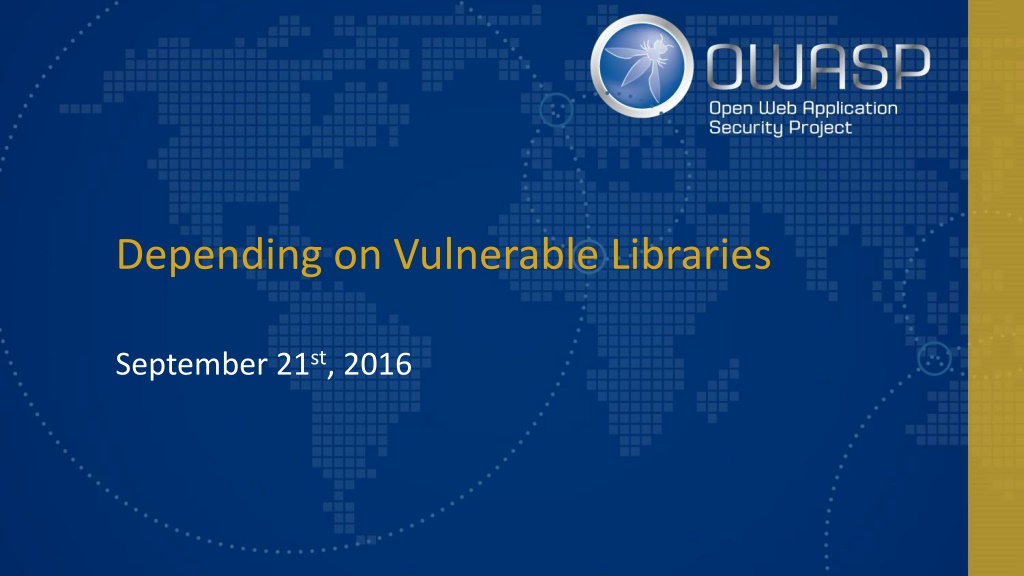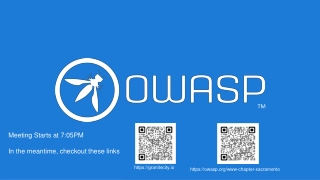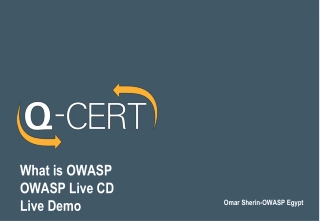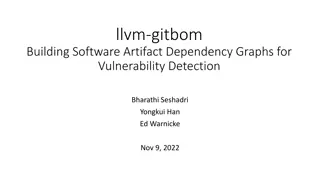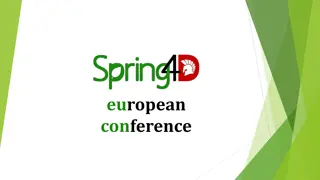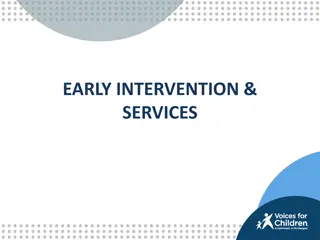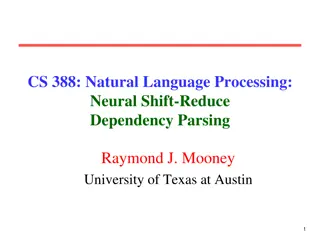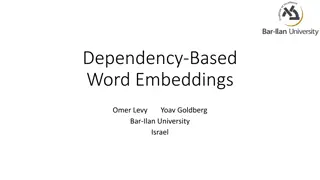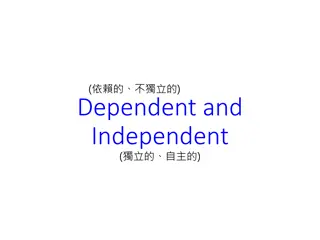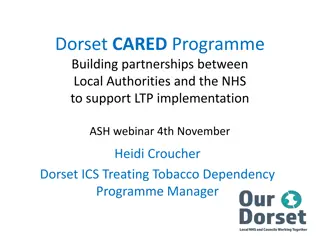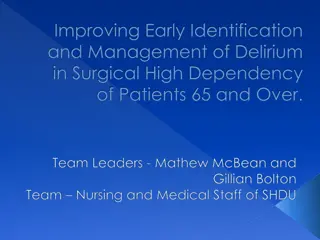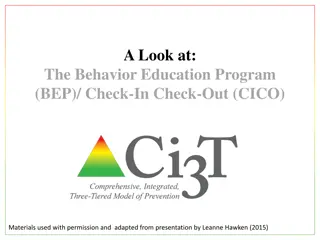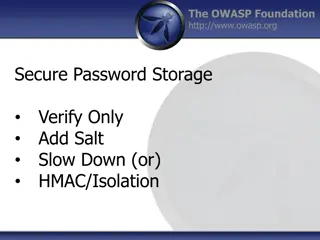Understanding the Importance of OWASP Dependency-Check Project
Explore the significance of OWASP Dependency-Check in managing software dependencies and mitigating known vulnerabilities in applications. Learn about the risks associated with using components with vulnerabilities and the challenges of patching programs. Discover how OWASP Dependency-Check provides a solution for software composition analysis and aids in addressing security concerns. Delve into the proactive measures application teams can take to enhance application security and reduce the impact of open-source vulnerabilities.
Download Presentation

Please find below an Image/Link to download the presentation.
The content on the website is provided AS IS for your information and personal use only. It may not be sold, licensed, or shared on other websites without obtaining consent from the author. Download presentation by click this link. If you encounter any issues during the download, it is possible that the publisher has removed the file from their server.
E N D
Presentation Transcript
Depending on Vulnerable Libraries September 21st, 2016
A bit about me Jeremy Long 15 years information security experience 10 years software development experience SAST enthusiast Contributor to the OWASP Java Encoder Project Lead developer/architect for OWASP dependency-check @ctxt / jeremy.long@owasp.org
What are we going to talk about? Why should we care? Patching programs What application teams can do Deep dive into dependency-check Usage scenarios Governance
Why should we care? CVE-2016-5000 - Apache POI Information Disclosure via External Entity Expansion (XXE) CVE-2016-4216 - Adobe XMP Toolkit for Java Information Disclosure via External Entity Expansion (XXE) CVE-2016-3081 - Remote code execution vulnerability in Apache Struts when dynamic method invocation is enabled CVE-2015-8103 - Remote code execution vulnerability in Jenkins remoting; related to the Apache commons-collections
Black Duck - Open Source Security Analysis The State of Open Source Security in Commercial Applications https://info.blackducksoftware.com/rs/872-OLS- 526/images/OSSAReportFINAL.pdf 95% of applications include open source 67% of applications contained open source vulnerabilities Average age of open source vulnerability identified: 1,894 days
OWASP Top 10 2013 Most critical web application risks A9 Using components with known vulnerabilities Prevalence: Widespread Detectability: Difficult Difficult for 4 reasons Awareness Visibility Lack of tooling in 2012/2013
Patching Programs Generally do not cover application dependencies Lack of awareness of 3rd party or FOSS application dependencies Patching teams cannot push patches Patching application dependencies requires Possible code changes Full regression testing
Enter OWASP dependency-check Project stated December 2011 (first published in 2012) Performs Software Composition Analysis Reports known vulnerabilities Easy solution to the OWASP 2013 Top 10 A9 Using components with known vulnerabilities Works as: Maven Plugin Gradle Plugin SBT Plugin Jenkins Plugin Ant Task Command Line
Language/Technology Support Fully supported: Java & .NET Experimental Analyzers: CocoaPods Swift Package Manager Python PHP (composer) Node.js Ruby
OWASP dependency-check HOW DOES IT WORK?
Vulnerability Data Source National Vulnerability Database (NVD) https://nvd.nist.gov Contains a listing of Common Vulnerability and Exposures (CVE) Each CVE entry contains A description of the vulnerability or exposure A Common Vulnerability Scoring System (CVSS) score A list of the affected platforms identified by their Common Platform Enumeration (CPE)
Library Identification Reporting on known/published vulnerabilities requires the correct identification of the libraries used
Library Identification Problems Development & Security use different identifiers Development (GAV coordinates): org.springframework:spring-core:3.2.0.RELEASE Security uses Common Platform Enumeration (CPE): cpe:/a:springsource:spring_framework:3.2.0 cpe:/a:pivotal:spring_framework:3.2.0 cpe:/a:pivotal_software:spring_framework:3.2.0 No publicly available database exists to map between the two
Evidence Based Identification Evidence is extracted from dependencies File name, manifest, POM, package names, etc. Evidence is grouped into Vendor, Product, and Version collections Local copy of the NVD CVE is maintained Lucene Index of the CPE information is created Evidence collected is used to search the index and identify the library by CPE
Evidence Based Identification Issues False Positives Evidence extracted may cause incorrect identification False Negatives If key elements are not included in the dependency (e.g. jar, dll) the library will not be identified and may result in un-reported risk
Dealing with False Positives Invalid dependency identification can be resolved using a suppression file: <suppress> <notes><![CDATA[ This suppresses false positives identified on spring security. ]]></notes> <gav regex="true">org\.springframework\.security:spring.*</gav> <cpe>cpe:/a:mod_security:mod_security</cpe> <cpe>cpe:/a:springsource:spring_framework</cpe> <cpe>cpe:/a:vmware:springsource_spring_framework</cpe> </suppress>
OWASP dependency-check USING DEPENDENCY-CHECK
Onboarding an Application Basic steps Configure plugin Proxy configuration Run initial scan Create and configure a suppression file (if needed) Plan the upgrade for identified vulnerable components
Use Cases for dependency-check Prove the existence of the problem Baseline test when conducting POCs with commercial solutions OWASP dependency-check is used as the primary tool to identify known vulnerable components
Enterprise Deployments Use a centralized database to maintain the local copy of the NVD Single instance of dependency-check used to update Scanning instances do not need to update Use an internal Nexus instead of Maven Central Run dependency-check within their CI Continuous monitoring/reporting using OWASP dependency- check sonar plugin, OWASP dependency-track, or ThreadFix
Vulnerable Dependencies as Code Quality Fail a build if known vulnerabilities are detected Jenkins, gradle, maven, ant plugins Put security into your code quality metrics OWASP dependency-check sonar plugin
Governance Known vulnerable dependencies are only one part of the software composition problem Organizations should: Control what dependencies are allowed Cleared by architecture, legal, and security reviews Must be easy/quick to engage the governance process
OWASP dependency-check QUESTIONS?
More Information OWASP dependency-check http://jeremylong.github.io/DependencyCheck/ OWASP dependency-track https://github.com/stevespringett/dependency-track OWASP dependency-check-sonar-plugin https://github.com/stevespringett/dependency-check-sonar-plugin
More Information Related Projects Ruby Bundler-Audit Retire.js Node Security Project
